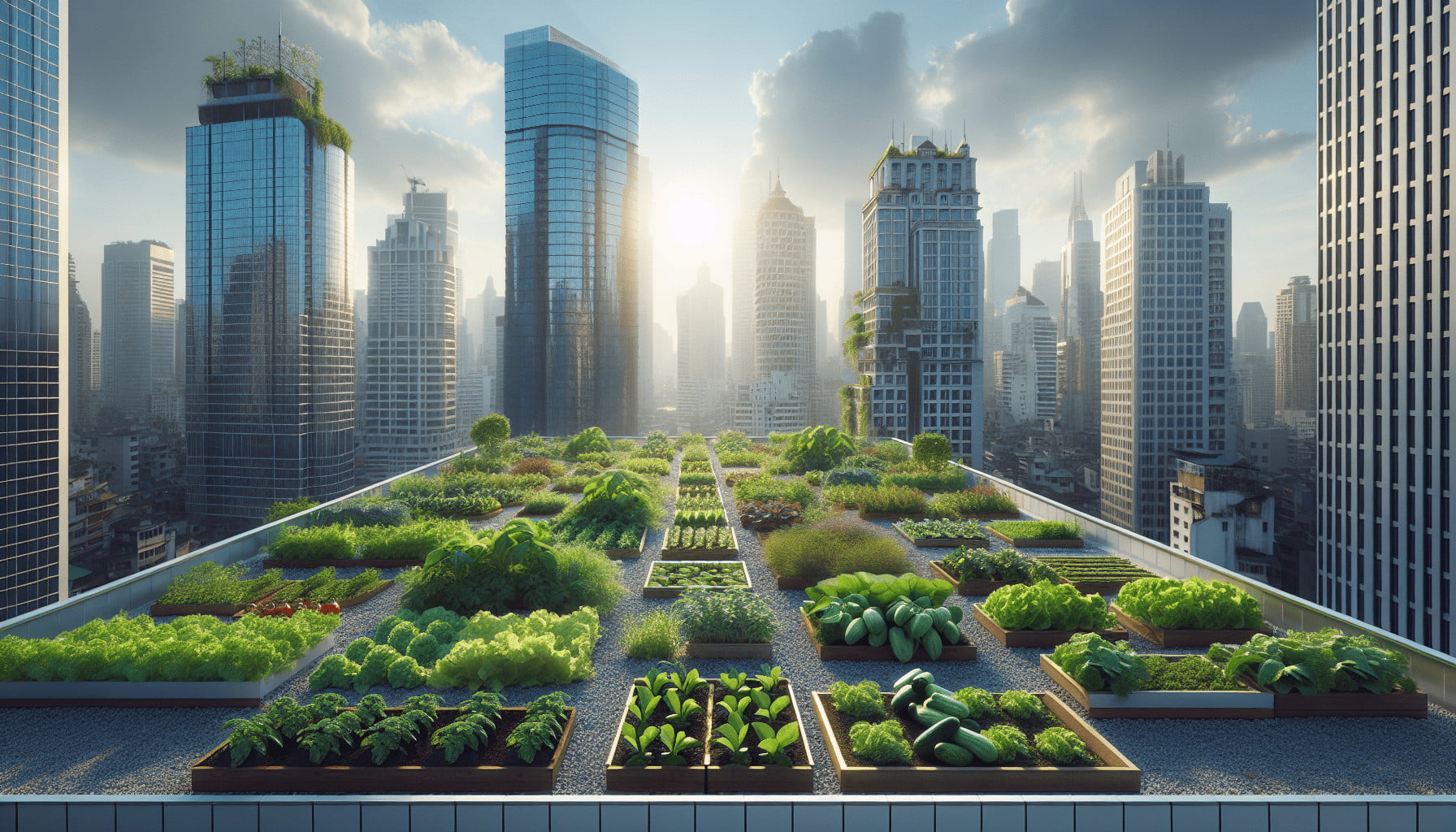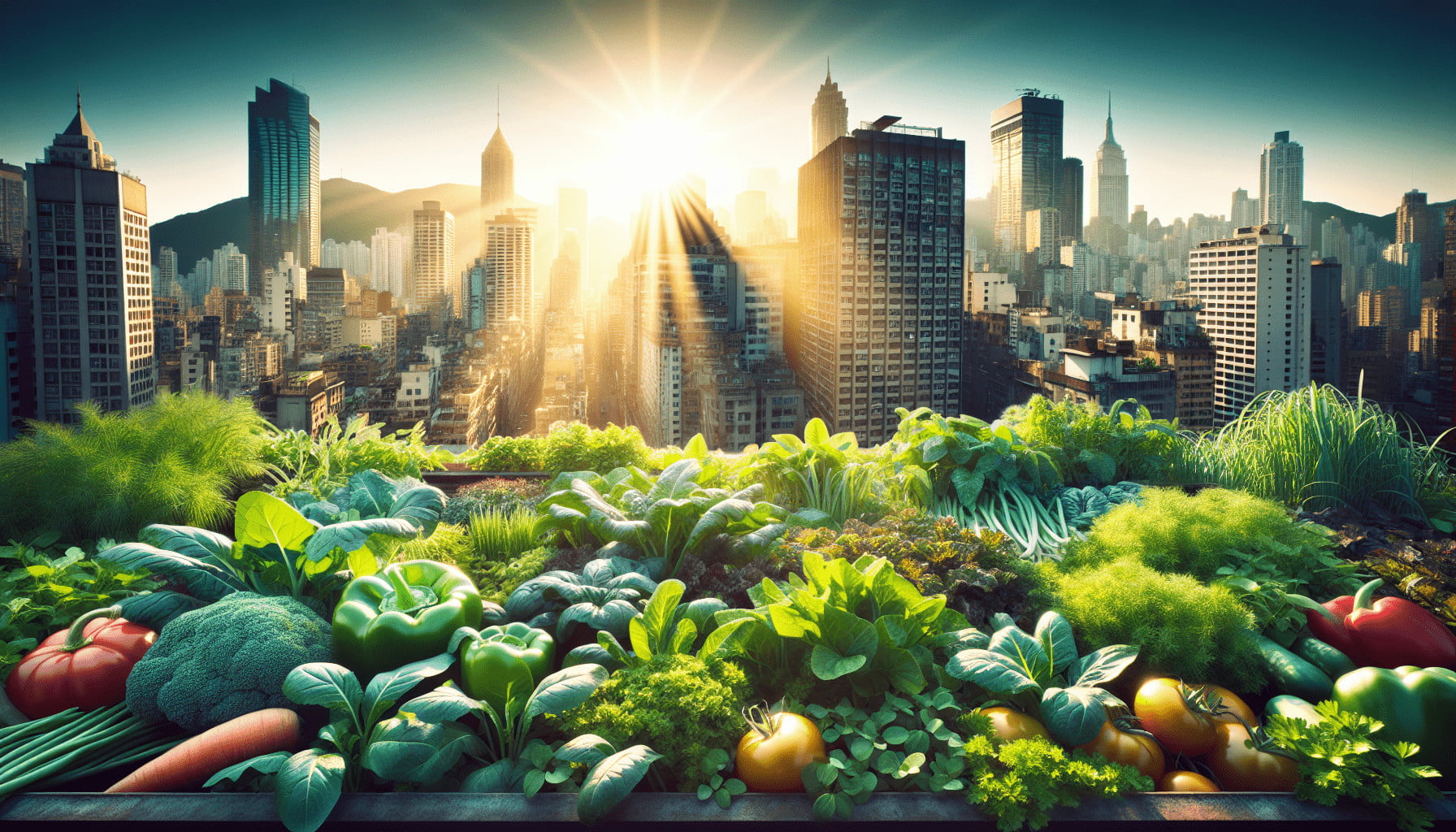Have you ever dreamt of having your vegetable garden right on your rooftop? Imagine stepping outside and picking your fresh tomatoes, lettuce, and herbs to create a delicious salad. Well, guess what? You can make this dream a reality with a rooftop vegetable garden! Follow this step-by-step guide to learn how to create your rooftop oasis of fresh, organic produce.

Planning Your Rooftop Vegetable Garden
Before you start digging in the dirt, take some time to plan out your rooftop vegetable garden. Consider factors like the amount of space you have, the amount of sunlight your rooftop receives, and the weight capacity of your rooftop. Planning ahead will ensure that your rooftop vegetable garden is a success.
Assessing Your Rooftop Space
First things first, take a good look at your rooftop and determine how much space you have available for your vegetable garden. Consider the layout of your rooftop, any obstacles or obstructions that may be in the way, and how much weight your rooftop can support. Make sure to measure the space accurately so you can plan out your garden layout accordingly.
Checking Sunlight Exposure
Next, consider how much sunlight your rooftop receives throughout the day. Most vegetables require at least 6-8 hours of sunlight to thrive, so it’s essential to choose a location on your rooftop that gets an adequate amount of sun. Keep in mind that certain vegetables, like tomatoes and peppers, may require even more sunlight to produce a bountiful harvest.
Determining Weight Capacity
Before you start building your rooftop vegetable garden, it’s crucial to assess the weight capacity of your rooftop. Soil, plants, containers, and other materials can add a significant amount of weight to your rooftop, so make sure your rooftop can support the additional load. Consult with a structural engineer if you have any doubts about the weight capacity of your rooftop.
Choosing the Right Containers
When it comes to rooftop vegetable gardening, the type of containers you choose can make a big difference in the success of your garden. Select containers that are durable, lightweight, and provide proper drainage for your plants. Here are some popular container options for rooftop vegetable gardens:
Plastic Pots
Plastic pots are a cost-effective and lightweight option for rooftop vegetable gardening. They come in a variety of sizes, shapes, and colors, making them easy to customize to fit your rooftop space. Make sure to choose plastic pots with drainage holes to prevent waterlogged soil and root rot.
Fabric Grow Bags
Fabric grow bags are a breathable and lightweight alternative to plastic pots. They provide excellent drainage and aeration for your plants, promoting healthy root growth and preventing overwatering. Fabric grow bags are also reusable and can be folded up for easy storage when not in use.
Wooden Crates
Wooden crates are a rustic and charming choice for rooftop vegetable gardening. They are sturdy, durable, and provide a natural look to your garden space. Make sure to line wooden crates with a waterproof barrier to prevent them from rotting over time.
Self-Watering Containers
Self-watering containers are a convenient option for rooftop vegetable gardening, especially if you have limited access to water on your rooftop. These containers have a reservoir at the bottom that allows the plants to draw up water as needed, reducing the frequency of watering. Self-watering containers are available in various sizes and styles to suit your garden needs.
Table: Container Options for Rooftop Vegetable Gardening
| Container Type | Material | Benefits |
|---|---|---|
| Plastic Pots | Plastic | Lightweight, customizable, affordable |
| Fabric Grow Bags | Fabric | Breathable, lightweight, promotes healthy root growth |
| Wooden Crates | Wood | Sturdy, durable, natural look |
| Self-Watering Containers | Various | Convenient, reduces watering frequency, various styles |
Choosing the right containers for your rooftop vegetable garden is essential for the health and success of your plants. Consider factors like weight, drainage, and aesthetics when selecting containers for your garden space.
Selecting the Right Vegetables
Now that you have your containers ready, it’s time to select the right vegetables for your rooftop garden. Consider the climate in your area, the amount of sunlight your rooftop receives, and your personal preferences when choosing vegetables to grow. Here are some popular vegetables that are well-suited for rooftop gardening:
Tomatoes
Tomatoes are a favorite vegetable for rooftop gardens due to their versatility and taste. They require plenty of sunlight, warm temperatures, and support for their vines to grow. Choose compact or dwarf tomato varieties for smaller rooftop spaces.
Lettuce
Lettuce is a quick-growing and easy-to-care-for vegetable that thrives in containers. It prefers cooler temperatures and partial shade, making it an excellent choice for rooftops that don’t receive full sun all day. Plant different varieties of lettuce for a colorful and diverse salad mix.
Herbs
Herbs like basil, parsley, cilantro, and mint are perfect for rooftop gardens due to their compact size and aromatic flavors. They can be grown in small containers and placed near your kitchen for easy access when cooking. Herbs also attract beneficial pollinators to your rooftop garden.
Peppers
Peppers are a great addition to rooftop vegetable gardens, as they require full sun, warm temperatures, and regular watering to produce abundant fruits. Choose varieties like bell peppers, jalapenos, or chili peppers that suit your taste preferences and cooking needs.
Table: Vegetable Selection for Rooftop Gardens
| Vegetable | Light Requirement | Growing Season | Container Size | Notes |
|---|---|---|---|---|
| Tomatoes | Full Sun | Warm Season | Large | Support vines as they grow |
| Lettuce | Partial Shade | Cool Season | Medium | Plant different varieties |
| Herbs | Full Sun to Part Shade | Year-round | Small | Aromatic and culinary uses |
| Peppers | Full Sun | Warm Season | Large | Choose varieties you enjoy |
Choosing a mix of vegetables and herbs for your rooftop garden will provide you with a bounty of fresh produce to enjoy throughout the growing season. Consider the specific requirements of each vegetable and plan out your garden layout accordingly.
Preparing the Soil and Planting
Now that you have your containers and vegetables selected, it’s time to prepare the soil and start planting your rooftop vegetable garden. Use a high-quality potting mix that is lightweight, well-draining, and rich in nutrients to promote healthy plant growth. Follow these steps to prepare the soil and plant your vegetables:
Filling Containers with Soil
Fill your containers with the potting mix, leaving a few inches of space at the top for watering. Avoid using garden soil, as it can compact in containers and hinder root growth. Gently pat down the soil to remove any air pockets and create a level surface for planting.
Planting Vegetables
Carefully transplant your seedlings or young plants into the containers, following the planting instructions on the seed packets or plant labels. Make sure to space the plants according to their mature size, providing enough room for growth and airflow. Water the plants thoroughly after planting to help them settle into their new homes.
Providing Support for Vining Plants
If you’re growing vining plants like tomatoes or cucumbers, provide them with the necessary support to grow upwards. Install stakes, trellises, or cages in the containers to prevent the plants from sprawling and support their heavy fruits. Train the vines as they grow to encourage upward growth and maximize space on your rooftop.
Table: Soil Preparation and Planting Guide
| Step | Instructions |
|---|---|
| Filling Containers with Soil | Use a high-quality potting mix, leave space for watering, pat down soil to remove air pockets |
| Planting Vegetables | Follow planting instructions on seed packets or plant labels, space plants according to mature size |
| Providing Support for Vining Plants | Install stakes, trellises, or cages for support, train vines as they grow |
By following these soil preparation and planting steps, you will set your rooftop vegetable garden up for success and ensure that your plants have the best possible start in their new environment.

Watering and Maintenance
Once your rooftop vegetable garden is planted, it’s essential to establish a regular watering and maintenance routine to keep your plants healthy and thriving. Monitor the moisture levels in the soil, check for pests and diseases, and provide the necessary care to ensure a bountiful harvest.
Watering Schedule
Create a watering schedule based on the needs of your plants, the weather conditions, and the type of containers you’re using. Water the plants deeply and thoroughly, making sure that the water reaches the roots and doesn’t just wet the surface of the soil. Adjust your watering frequency as needed to prevent underwatering or overwatering.
Fertilizing Plants
Feed your plants with a balanced fertilizer to replenish nutrients in the soil and promote healthy growth. Use a slow-release fertilizer or organic fertilizer to avoid burning the roots of your plants. Follow the instructions on the fertilizer package and apply it at regular intervals throughout the growing season.
Pruning and Harvesting
Prune your plants regularly to remove damaged or diseased leaves, encourage new growth, and improve airflow around the plants. Harvest vegetables as they ripen, using sharp shears or scissors to prevent damage to the plant. Continue to monitor your plants for pests and diseases and take appropriate action to control them.
Table: Watering and Maintenance Tips
| Task | Instructions |
|---|---|
| Watering Schedule | Create a regular watering schedule, water deeply, adjust frequency as needed |
| Fertilizing Plants | Feed plants with balanced fertilizer, use slow-release or organic fertilizer |
| Pruning and Harvesting | Prune plants to remove damaged leaves, encourage new growth, harvest veggies as they ripen |
By following a consistent watering and maintenance routine, you will help your rooftop vegetable garden thrive and produce a plentiful harvest of fresh, organic vegetables throughout the growing season.
Conclusion
Congratulations, you’ve successfully created a rooftop vegetable garden! By following this step-by-step guide, you’ve learned how to plan and set up your garden space, select the right containers and vegetables, prepare the soil and plant your plants, and maintain your garden for a bountiful harvest. Enjoy the fruits of your labor and savor the taste of homegrown vegetables straight from your rooftop oasis. Happy gardening!
